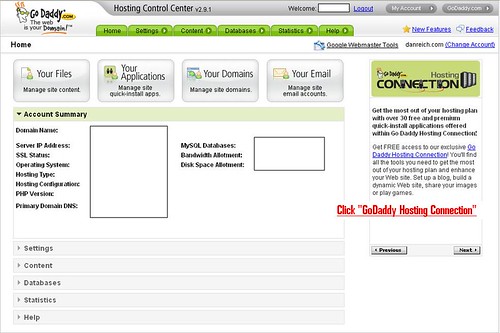
(Disclaimer: I currently work for Lotame Solutions).
Let’s face it, the “Social Media” buzz word has been used a bit much these days doing two things:
- Validating its importance and relevance in an evolving communications landscape. As the usage statistics for these social sites and platforms continue to grow, the constant referencing of the term “social media” or “social web” will only continue to rise (Warning: The web is becoming social).
- Making it extremely difficult for marketers to navigate through the hundreds of “Social Media” marketing solutions. It’s not that there are not too many “social media sites/platforms”, but too many social media marketing solutions. For example, Facebook is a social media site with, as of now, a relatively weak marketing solution given their decision to remain extremely focused on increasing the overall user experience. Lotame and the other companies mentioned in this list do not have social media sites (most mentioned), they have social media marketing solutions. Until the Facebooks and Twitters of the world figure out a coherent marketing solution for advertisers, marketers will continue to need help.
After being immersed in the “Social Media” industry for over a year now and speaking to a wide variety of industry professionals, I’d like to present my list of who I think are the Kings of Social Media marketing (not to be confused with social media sites or platforms). These are companies that have established a necessary product or service capable of delivering cost effective and successful marketing campaigns within “Social Media”, regardless of company size, revenue, public visibility or public relations, funding and support.
(In no particular order…after 1)
1.
Lotame‘s technology called Crowd Control gives marketers, agencies and advertisers the ability to not only reach users that fit their target profile, but also arms marketers with the ability to reach the Influencers. These are the users that are most engaged with the social media platform or website. Additionally, Crowd Control allows agencies to build their own custom audience around specific brands or products, and expose those users to a campaign based on a set amount of time (think 30 second tv commercial) instead of traditional ad serving impressions.
2.
Buddy Media builds custom branded applications that can be integrated within social media platforms. Instead of trying to monetize the space around a social media site, buddy media creates an environment where users engage with the brand itself. Using their technology called BuddyBrain, Buddy Media can track usage statistics for their clients demonstrating how valuable it is to integrate a brand with a social media application.
3. 
AdNectar takes the viral approach to a new level by building light, integrated social campaigns. AdNectar enables marketers with the ability to create their own e-gifts that can be inserted directly into the conversation. Once the brand becomes a part of the conversation, brand awareness increases exponentially as users spread the word by sharing the gifts among their friends.
4. 


BzzAgent takes on the word-of-mouth marketing approach. Users voluntarily sign up as BzzAgents in their Frogpond and get first access to new products they demonstrate an interest in. Since the product is meaningful and relevant to the individual, they are inclined to spread the word amongst their friends. In exchange for getting a first look at new products, the marketers get completed surveys around the product or brand.
5. 
LinkedIn POLLS: LinkedIn has a feature called LinkedIn Polls. This feature is powerful as it enables marketers to ask, in real time, survey questions to a very specific type of audience either based on occupation or their social graph. Since users very specifically declare attributes about their professional life, marketers looking to reach decision makers or executives can do so in an easy interface.
6.
Spongecell takes the traditional IAB ad unit and turns it into a social asset. By integrating social components such as “add to calendar”, “email to friend”, “add to Facebook”, Spongecell helps marketers take a standard creative asset and turn it into a potentially viral element.
7. 
OggifFinogi makes User Generated Content available within standard, but flashy and engaging ad units. By dynamically inserting videos into the ad unit, marketers can easily and cost effectively build rich media creatives that can be served as standard IAB ad units. Furthermore, these ad units can open up whereas the user is exposed to a marketer’s micro site or video commercial without having to leave the publishing site.
8. 
Clearspring enables marketers to build and virally spread their lightweight widgets across the internet. Marketers can build their widgets through their program called WidgetMedia, and additionally spread and track distribution with their program/product called LaunchPad.
9.
Amplify provides a way for marketers to track the buzz and conversation between users across social media. Although there are many solutions out there that look at keywords and context, Amplify takes it a step further offering sentiment around a particular product or brand.
There are many other great social media marketing solutions out there. What kind of experiences have you had with social media marketing in general?


![Reblog this post [with Zemanta]](https://img.zemanta.com/reblog_e.png?x-id=bcac4fc0-6750-41ca-97ec-268f46f27b28)








![Reblog this post [with Zemanta]](https://img.zemanta.com/reblog_e.png?x-id=00fcde3b-6f71-4f4f-b62b-168ec56d17b4)










![Reblog this post [with Zemanta]](https://img.zemanta.com/reblog_e.png?x-id=8445fb87-77ac-4438-962a-3b242763164c)

![Reblog this post [with Zemanta]](https://img.zemanta.com/reblog_e.png?x-id=e72bb4bf-bd5b-45a3-87f1-11c228e4c162)


![Reblog this post [with Zemanta]](https://img.zemanta.com/reblog_e.png?x-id=ab546ce0-5393-4bf3-8dcf-9e2476c21f13)
![Reblog this post [with Zemanta]](https://img.zemanta.com/reblog_b.png?x-id=983e0916-658f-4815-9b49-2fe7cb0da456)